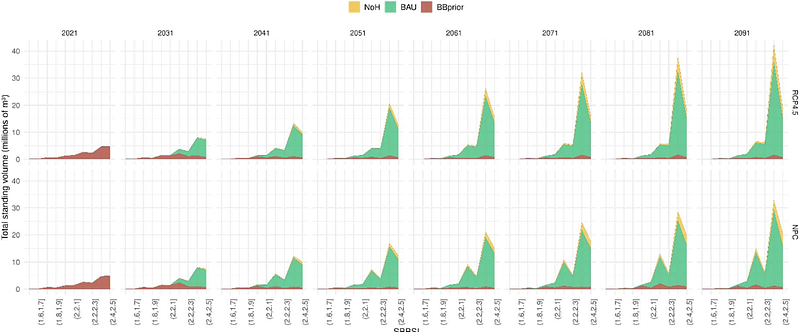A high-resolution, country-wide scenario analysis of forest susceptibility to spruce bark beetle damage in Norway

A high-resolution, country-wide scenario analysis of forest susceptibility to spruce bark beetle damage in Norway
Cattaneo, N.; Krokene, P.; Astrup, R.
AbstractThe European spruce bark beetle (Ips typographus (L.)) poses a growing threat to Norways forests under climate change, particularly in extensive spruce-dominated forests. Because controlling active outbreaks is notoriously difficult, reducing forest susceptibility through proactive management is essential. In this study, we used high-resolution simulations covering all of Norways forested land (120,000 km2) to explore how different harvesting strategies affect long-term forest susceptibility to SBB damage. We compared a no-harvest baseline, a business-as-usual regime guided by economic criteria, and a risk informed strategy that prioritizes harvesting of the most susceptible stands. Across two climate trajectories, we found that susceptibility-guided harvesting significantly reduced average forest susceptibility and fragmented high-risk areas, particularly in southern Norway. However, our results also reveal limitations to this approach: even with aggressive susceptibility-guided harvesting, long-term risk reductions plateau due to the homogenizing effects of even-aged forestry. Spatial connectivity analysis using electrical circuit theory further showed that susceptibility-guided harvesting disrupted landscape continuity among high-risk patches, suggesting a potential to constrain outbreak spread. These findings highlight the value of integrating susceptibility indicators and spatial connectivity metrics into forest planning to support adaptive, risk-informed management under climate uncertainty.